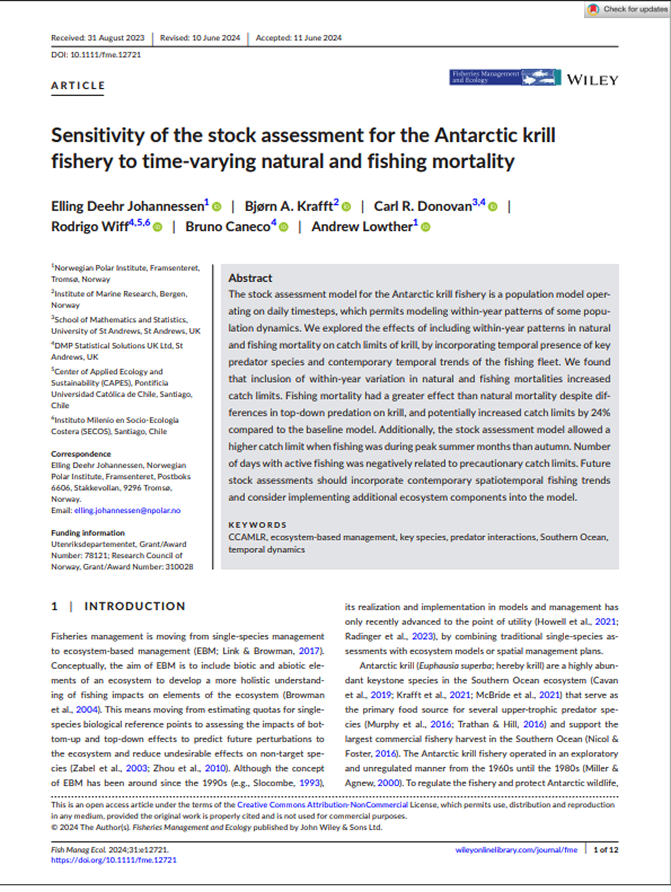Biomass
Fisheries management
Antarctic ecosystem
Krill (Euphausia superba)
KRILLSCAN: An automated open-source software for processing and analysis of echosounder data from the Antarctic krill fishery
Summary
Krillscan is an open-source software developed to automatically process echosounder data from fishing vessels to calculate krill biomass.When scientists tested Krillscan against the traditional manual method of analyzing the data, it gave nearly identical results.The software enables data compression (up to 100 times), near real-time analysis, and remote data transfer, allowing fishing vessels to contribute to krill biomass surveys without requiring specialized scientific personnel on board.

1
The figure shows the software's graphical user interface for reviewing underwater sound data. The interface displays underwater sound images (echograms) that show where krill swarms are located in the water column. Users can view both the raw underwater sound data and the processed version, and can manually correct any detection errors. This visual checking tool ensures the accuracy of the automated krill measurements before the data is transmitted via satellite from fishing vessels to research centers on land. Key Findings
1
Krillscan automatically analyzes underwater sound data (echosounders) to estimate krill biomass2
The software underestimated krill biomass by only 6% compared to traditional manual methods, with a coefficient of variation of 0.063
Data can be compressed up to 100 times, enabling efficient transfer via satellite4
The software processes data faster than it's collected, allowing near real-time analysis5
Enables fishing vessels to conduct acoustic surveys without requiring scientific personnel on board

